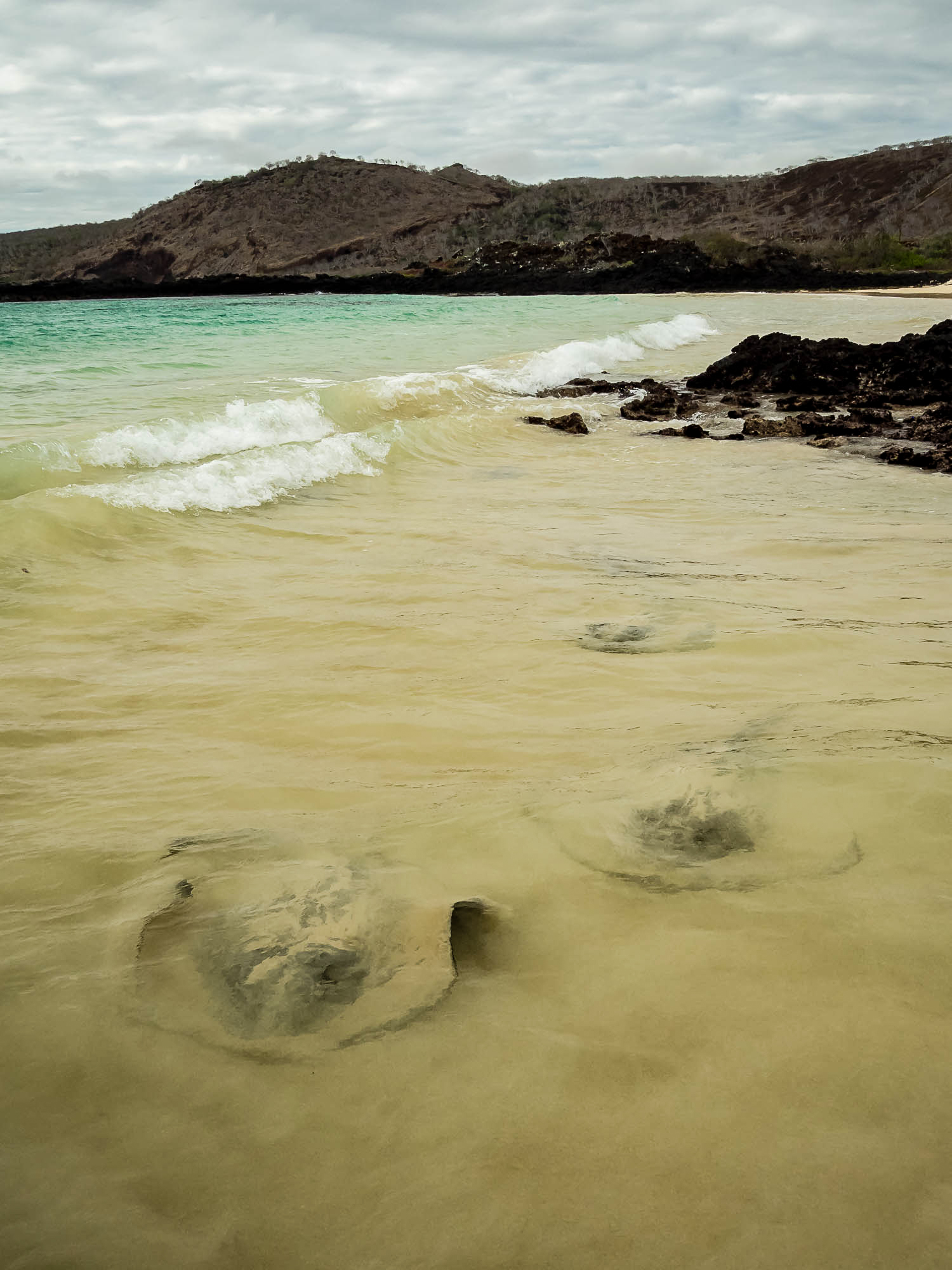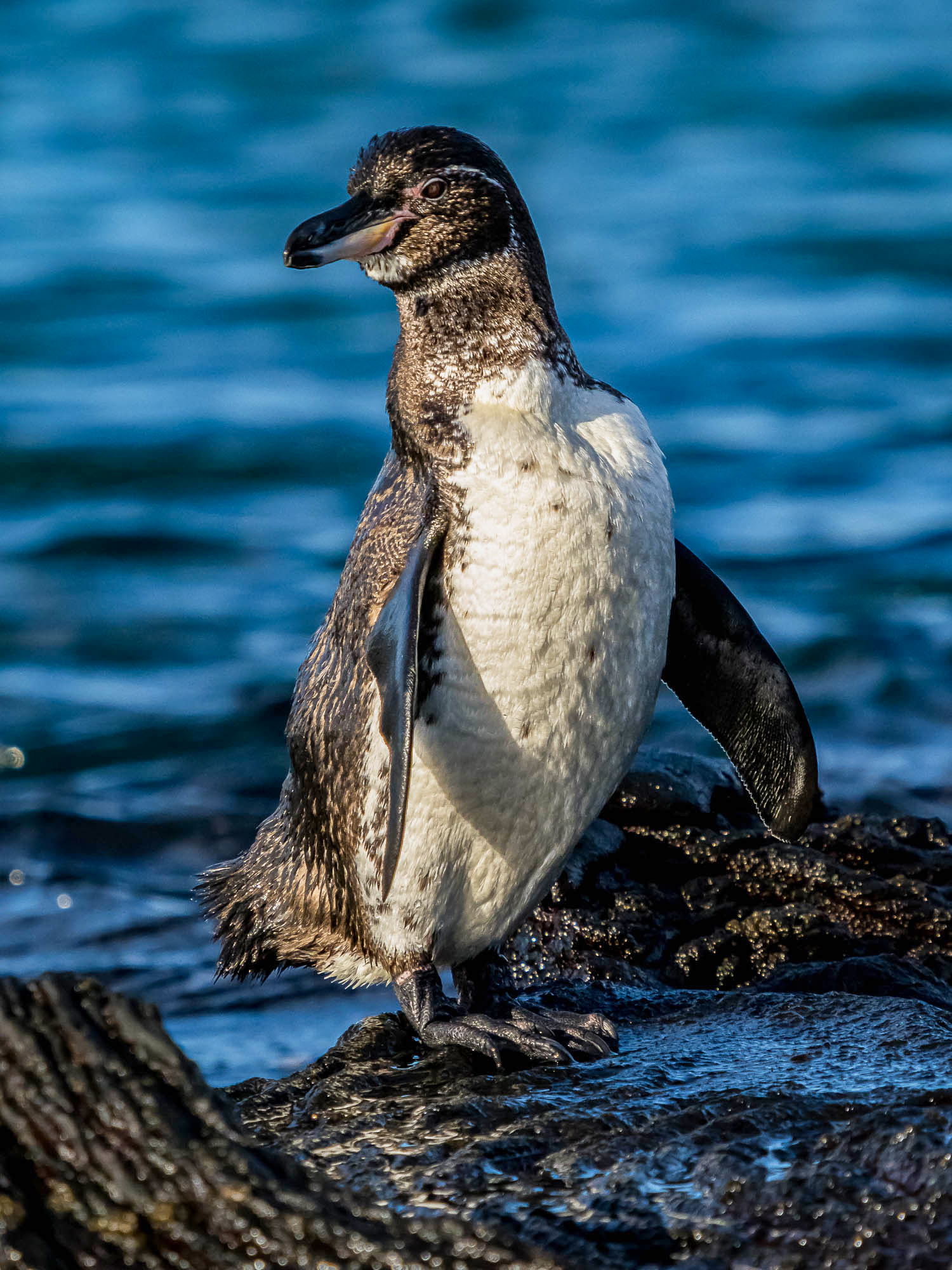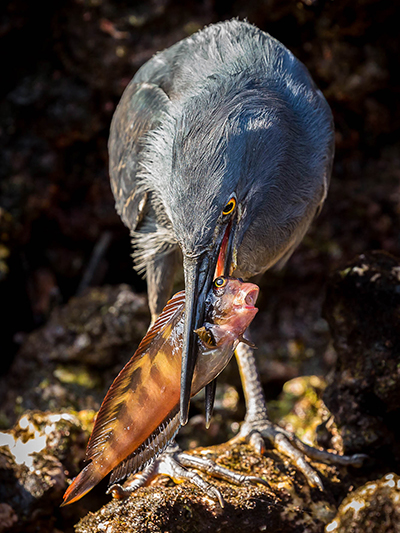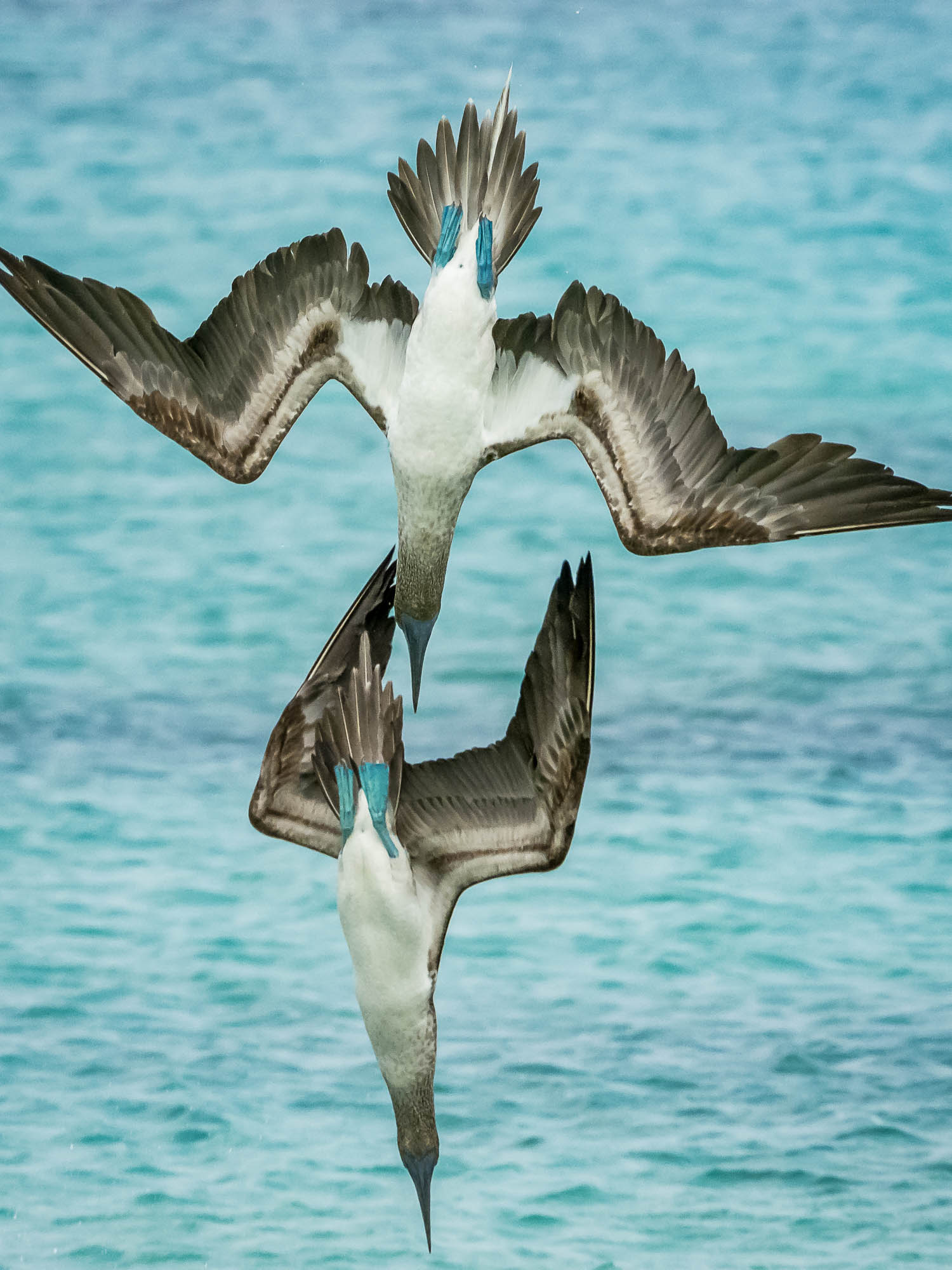GALAPAGOS ADVENTURE ITINERARY
BIRDING & PHOTOGRAPHY ADVENTURE
Day 1 – Arrive Quito
Arrive in Quito at any time. Our representative will greet you at the airport and transfer you to our hotel.
Day 2 – Papallacta Pass and Guango Lodge hummingbirds
Today we will drive east through Papallacta Pass at nearly 13,000ft where we have seen Andean Condors on occasion. Continuing east we will arrive at Guango Lodge to enjoy Hummingbirds in their gardens and at their feeders. Incredible photo opportunities abound as we try to capture images of these wonderful creatures. We will have lunch at the lodge and enjoy a walk along the river before we return to Quito for dinner.
Day 3 – Baltra / Santa Cruz Highlands
Early flight to Baltra, in the Galapagos Islands. Upon arrival meet our naturalist guide who will assist with the transfer to our boat, the San Jose.
The national park charges a visitor fee of $100 USD, payable on arrival, which funds Park maintenance and supervision in the Galapagos, as well as ecological study, conservation and infrastructure development in Ecuador’s other National Parks. Entry fees and the funds they generate for the National Park System are among measures taken by the Ecuadorian government to protect its natural heritage.
Our first excursion will be the highlands of Santa Cruz to enjoy the Giant Tortoises in the wild. In the Scalesia (Daisy Tree) forest we should also see many species of Darwin’s Finches.
Day 4 – Genovesa
Land at Genovesa Island, an old imploded volcano, to observe the massive colonies of Frigate Birds, Boobies and other seabirds as well as striking volcanic cliffs rising from the ocean.
Well to the north of the main Galapagos Island group, Genovesa is the shape of a horseshoe given it’s volcanic history. The island has a volcanic caldera whose wall has collapsed, forming the Great Darwin Bay, surrounded by cliffs. Lake Arcturus, filled with salt water, lies in the centre, and sediment within this crater lake is less than 6,000 years old. Our first excursion in Darwin Bay provides us some fantastic snorkeling opportunities within the a partially eroded crater.
In the afternoon there will be an excursion to “El Barranco,” otherwise known as Prince Phillip’s Steps, on the southern tip of the island. This is an extraordinary path that leads through a seabird colony full of life, up to cliffs that are 75ft high. At the top, the trail continues inland, passing more seabird colonies in a thin palo santo forest. Storm-petrels nest here and can sometimes be seen avoiding their chief predator, Short-eared Owls.
This island is also known as Bird Island, because of the large and varied bird colonies which nest here, and the whole ecology is made of birds and marine iguanas, no mammal. There are an abundance of frigatebirds and it is the best place to see Red-footed Boobies in the Galapagos.
Day 5 – Isla Santiago / Bartolomé
Sullivan Bay on Santiago Island offers striking lava formations. Very few plants have managed to survive on this island due to the harsh environment and relatively new lava floe, about 110 years old.
Bartolomé Island has two main areas of interest. A hike to the summit of the island provides a clear perspective of the islands’ not-too-distant volcanic origins, and the panoramic view is one of the best among the islands. From here are visible the double-sided beach of Bartolomé directly below, the volcanic tower rising out of the water next to it, and Santiago in the distance. After the summit hike, stop at the beach to relax in semi-tropical tranquility. There is great snorkeling among the submerged volcanic rock and around the base of the tower. A short hike to the beach on the opposite side is worth the minimal effort. It is not unusual to see sharks in these shallow waters.
Day 6 – Santa Cruz Island – Charles Darwin Research Station / Highlands
Although the great majority of Galapagos visitors come here to observe and appreciate natural wonders, it is also interesting to learn about the protection and conservation of the islands. After our visit we will have the opportunity to walk through the largest town in the Galapagos, Puerto Ayora. Enjoy the color, the people and even the wildlife and grab some souvenirs along the way!
The road to the highlands leaves from Bellavista, a small village located a 15-minute drive from Puerto Ayora and passes through the agricultural zone, near the National Park boundary, the Miconia Zone, and then goes to the Fern and Sedge zone. With clear weather, this area boasts beautiful scenes of rolling hills and extinct volcanic cones covered with grass and lush greenery all year round. Here we will visit the Twin Craters, surrounded by “Daisy Trees” known as the Scalesia Forest.
Here in the highlands we will visit private property where the Giant Tortoises roam wild. Seeing these behemoths in the wild is an amazing experience and great photo opportunities abound. We will find many species of finches here, too… and maybe even the rare Galapagos Rail or Paint-billed Crake.
Day 7 – Floreana – Punta Cormorant / Post Office Bay
Make our way to Punta Cormorant on the northern part of Floreana. The landing is on a beach of greenish sand, colored by olivine crystals, volcanic-derived silicates of magnesium and iron. The trail leads to a lake normally inhabited by flamingos and other shore birds and continues to a beach of fine white sand particles known as “Flour Beach”, an important nesting site for turtles and rays.
Around the point, Devil’s Crown derives its name from the broken remains of a partially submerged volcanic cone. This is a perfect spot to go snorkeling from the boat, as the waters are home to a multitude of colorful fish and sea lions. Please make sure you are a comfortable swimmer, however, as despite the protection from the open sea provided by the “crown,” the water here can be rough and the currents strong.
Later in the afternoon we stop at Post Office Bay. A barrel was placed here in the late 18th century by English whaling vessels to be used as a post office. Passing ships would stop to leave mail for loved ones, collecting at the same time any mail destined for ports on their itineraries. Today the box is used mainly by tourists, who may drop off and pick up unstamped letters to be carried to far destinations. The remains of a Norwegian canning factory are the only evidence of the Island’s history prior to its designation as a protected area.
The history of Floreana Island (also called Charles) has gradually evolved to reach near mythic proportions. The story begins when a baroness and her two lovers, a German doctor and his mistress, and a German couple and their young son all came to settle on this land. Their dalliances and disasters, shrouded in mystery, were chronicled in John Treherne’s book The Galapagos Affair. Descendants of the German family, the Wittmers, still live on the island in the small community of Puerto Velasco Ibarra. Mrs. Margaret Wittmer has also written a booked entitled “Floreana”.
Day 8 – Española – Garner Beach / Punta Suarez
At Gardner Bay on Española Island (also called Hood Island) we’ll walk along one of the most beautiful beaches in the archipelago. Sea lions and bird life will keep us very occupied, but there will also be the opportunity to go snorkeling.
Punta Suarez on the western side of Española is spectacular: gargantuan waves break on jagged cliffs and large bird colonies thickly populate the interior of the island; there is a distinct feel of desolate wilderness here. The Waved Albatross is seen here from May to November during its mating/nesting season. This bird leaves land between December and April each year to make its annual odyssey far out to sea. Amazingly, Española is the nesting site to virtually the entire world population of this species, with more than 12,000 pairs residing here. Large numbers of Nazca and Blue-footed Boobies are also found here, Red-billed Tropic Birds dash madly through the air, and both Marine Iguanas and sea lions are common. A huge blowhole, where the surf is forced through a natural rock formation spouting seawater 50 or more feet into the air, adds to the island’s impression of untamed beauty.
Day 9 – San Cristóbal – Punta Pitt / Cerru Brujo
Two wind sculptured tuff cones at Pitt Point make up the extreme eastern end of San Cristóbal, and thus, the archipelago as well. These cliffs were the first sight of land when HMS Beagle and Charles Darwin arrived on the 15th of September, 1835. On the small green sand beach, you will be welcomed by a group of barking Galapagos sea lions. This is a bachelor colony, where males usually relax and prepare themselves for fighting and mating.
From the saltbush and spiny shrubs behind the beach, a trail leads up to an area of tropical dry forest vegetation: most of the year you can find leafless palo santo trees, yellow cordia shrubs, tiny prickly pear cacti and carpetweed that turns red in the dry season. After the steep climb through a gully to the clifftop, you can wander around the only colony in Galapagos that has all three species of boobies: blue-footed, red-footed and Nazca booby; as well as both species of frigatebird (great and magnificent), famous because of their scarlet balloon-sized pouches during mating season. Frigatebirds attack returning boobies and conduct aerial battles rather than fishing for themselves.
The primary attraction of Cerro Brujo is the coral sand beach where we may find ghost crabs, hermit crabs, lava lizards and many birds. Cerro Brujo is the remains of a tuff cone and one of the first sites visited by Charles Darwin. It has an impressive landscape, where it is often possible to see coastal and migratory birds, including pelicans, blue-footed boobies and swallow-tailed gulls; as well as sea lions and marine iguanas.
Day 10 – Isla Lobos / Flight to Quito
Our final morning in the Galapagos will offer a final visit with many sea lions and frigatebirds on the islet of Isla Lobos.
After our brief visit we will transfer out to San Cristóbal Airport to return to Quito.
Day 11 – Return Home
Departures throughout the day…





